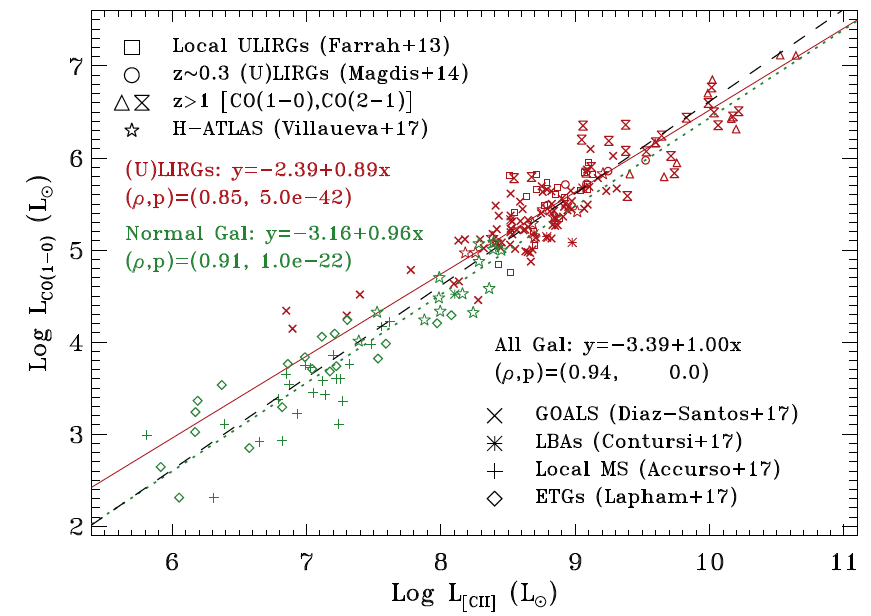ZHAO Yinghe from Yunnan Observatories of Chinese Academy of Sciences, and his collaborators, have carried out a detailed study on the correlation between the [C Ⅱ]158 micron emission and the CO(1-0) line. The related results have been recently published in The Astrophysical Journal.
Molecular gas (H2) fuels star formation (SF), which is one of the most fundamental drivers of galaxy evolution, and thus obtaining the gas content in galaxies is crucial. However, the traditional H2 mass tracer, CO(1-0) line, is difficult to detect or observe in the early Universe due to various reasons such as decreasing metal content. As a result, alternative H2 tracers are highly sought after, as more and more galaxies have been identified at high redshifts.
In recent years, the [C Ⅱ]158 micron emission has emerged as a potential tool for probing the gas content in the distant Universe. Nevertheless, previous research has lacked a consistent way and a heterogeneous data set covering a wide parameter space to validate the capability and reliability of the [C Ⅱ]158 micron emission as a total molecular gas tracer.
To address this gap, the researchers analyzed a sample of approximately 200 local and high-z (32 sources with redshift >1) galaxies with very different physical conditions. They discovered a strong linear relationship between the luminosities of [C Ⅱ] and CO(1−0) line, confirming that [C Ⅱ] is able to trace total molecular gas mass, with a small difference between ultra-luminous infrared galaxies and less-luminous galaxies. The researchers also suggested that this relation is likely determined by the average value of the observed visual extinction and the range of far ultraviolet intensity-to-gas density ratio in galaxies.
Through further investigations, the researchers revealed that the [C Ⅱ]/CO ratio correlates with various galactic properties, such as the surface density of the infrared luminosity, the distance from the main sequence and the fraction of [C Ⅱ] emission from ionized gas. These results imply that caution needs to be taken when applying a constant [C Ⅱ]-to-H2 conversion factor to estimate the H2 mass in extreme cases, such as galaxies having low-level SF activity or high SF rate surface density.

Figure 1: Correlation between the [C Ⅱ]158 micron and CO(1-0) lines for galaxies with various redshifts and types. Image by ZHAO.
Contact:
ZHAO Yinghe
Yunnan Observatories, CAS
Email: zhaoyinghe@ynao.ac.cn